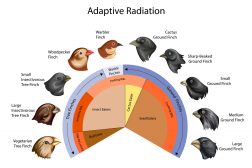Table of Contents
Coccidia (singular: coccidium) are sporozoans that live as parasites of the digestive tracts of certain animals. The parasitism caused by coccidia that may lead to a disease is called coccidiosis. Coccidia may also refer to the subclass within the class Conoidasida, of the phylum Apicomplexa. Examples of coccidian parasites are Isospora, Cyclospora and Cryptosporidium species.
Etymology
The word came from the New Latin Coccidium, from coccus and the Greek -idion. Synonyms: Coccidiasina; coccidian.
Characteristics of Coccidia
Coccidian parasites are microscopic single-celled organisms. They comprise the largest proportion of apicomplexan protozoa. They form spores and live as intracellular parasites of its host. There are five coccidian life forms: (1) oocyst, (2) sporozoite, (3) trophozoite, (4) merozoite (schizont), and (5) gametocyte. The oocyst begins at being unsporulated. This is the non-infective form of the organism characterized by having a single nucleus and a large pool of protoplasm surrounded by a thick shell. Inside the oocyst, the protoplasm divides to produce sporozoites. The sporulated oocyst is the infective form of coccidian found in the environment. The merozoite or the schizont is the asexual stage inside the intestine of the host. It is nucleated and elongated. The gametocytes are involved in the sexual stages and are also found in the host’s intestine.
Life cycle

Coccidia are obligate parasites. This means that there is no free-living phase in Coccidia life cycle. They live entirely as a parasite inside the host. Their definitive host may be a mammal (e.g. humans, cats, dogs, rabbits, etc.), a bird, a reptile, or an amphibian. They infect the intestinal tract of these animals. The life cycle of coccidian is comprised of three major stages: (1) sporogony or sporulation, (2) merogony (schizogony), and (3) gametogony. The first two are the asexual phase. The last phase is the sexual phase. In sporogony, the host excretes feces containing unsporulated oocysts. The oocyst turns into a sporulated form (by sporulation) when the environment is suitable, e.g. high humidity, good oxygenation, and temperatures around 27°C. During sporulation, the nucleus divides a number of times, depending on the species. Then, a conical body forms around each nucleus, forming a sporoblast. The sporoblast, then, secretes a wall and then divides the protoplasm, forming two sporozoites. At this time, the sporulated oocyst containing the sporozoites serves as the infective stage of a coccidian parasite.
After sporogony, schizogony ensues. At this stage, the sporulated oocyst upon the ingestion of the host liberates the sporozoites inside The sporozoites become active in the presence of trypsin or bile of the host. They invade the intestinal epithelial cells and become trophozoites. The trophozoite divides to produce merozoites. Inside the trophozoite, the collective term for all the merozoites is meront. Upon maturity, the trophozoite (as well as the host cell) ruptures to release the merozoites that can infect another epithelial cell. The merozoites may reproduce asexually as described above or to progress to the next stage, gametogony.
In gametogony, the merozoite may differentiate into a gametocyte. The female gametocyte, which is larger than a male gametocyte, is called macrogametocyte. The male gametocyte is referred to as microgametocyte. The macrogametocyte has a large nucleus and may fill the host cell. The microgametocyte develops a flagella, and therefore, motile. Microgametes are released from the ruptured host cell and swim their way to the macrogametocyte. A single microgametocyte will fertilize a macrogametocyte to produce a new oocyst. The oocyst will eventually be released into the environment by fecal excretion. The parasite uses paratenic (transport) hosts, such as hamsters, mice, rats, and other vertebrates.
Coccidia in non-human hosts
Coccidia are intestinal parasites of mammals, birds, reptiles, and certain amphibians. They live chiefly in the intestinal wall of their host. The disease caused by coccidian parasite is referred to as coccidiosis. Coccidia in dogs occur when ingested from contaminated environment. Coccidia in puppies are also common. In fact, more puppies are infected with coccidian parasites than older dogs and coccidiosis is more severe, even fatal, in puppies than in older dogs. The most common symptom is a watery, mucous-like diarrhea. A more serious symptom is a bloody diarrhea. Coccidia in cats (especially kittens) similarly experience diarrhea. Some infected cats may be asymptomatic. Others show symptoms of coccidiosis, such as watery stool, vomiting, and dehydration. The condition is often mistaken to be caused by intestinal worms. However, coccidia are not worms but single-celled parasites inside the infected cells that line the intestine. Coccidia in rabbits that are older could be asymptomatic. However, the young ones can have stunted growth due to the side effects on the kidney and the liver. The most common species that infect dogs are Isospora canis, I. ohioensis, I. neorivolta, and I. burrowsi. In cats, the common species are I. felis and I. rivolta. In rabbits, Eimeria sp. is the common causing agent.
Coccidia in humans
Apart from dogs, cats, and rabbits, humans are also susceptible to coccidian infection. Human coccidiosis is usually caused by the coccidian parasite, Cystoisospora belli. Other common coccidian parasites are Cyclospora and Cryptosporidium species. Common symptoms are diarrhea (which could alternate with constipation), fever, abdominal pain, headache, nausea, loss of appetite, and weight loss. The symptoms usually appear one week after sporocyte ingestion. The symptoms could subside after one to four weeks.
Coccidia treatment
Coccidia treatment in humans is through administration of medications called coccidiostats, e.g. Amprolium, Decoquinate, Lasalocid, Roxarsone, Salinomycin, Spiramycin, etc. In dogs and cats, the treatment is a sulfa-based antibiotic. These drugs disrupt the reproduction of coccidia.
Prevention
Coccidia prevention is by good hygiene. The infective stage of the parasite is found in the environment through contaminated fecal material. Thus, cleansing of hands and avoiding swallowing water from pools and the likes are helpful in preventing coccidian parasites from entering the body and infecting intestinal cells.
See also
- Coccidiosis
References
- Coccidia Life Cycle – WikiVet English. (2012). Retrieved from Wikivet.net website: https://en.wikivet.net/Coccidia-Life-Cycle
- MediRabbit. (2020). Retrieved from Medirabbit.com website: http://www.medirabbit.com/EN/GI_diseases/Protozoal_diseases/Cocc_en.htm
- CDC – Cystoisosporiasis – Biology. (2019). Retrieved from https://www.cdc.gov/parasites/cystoisospora/biology.html
- Cryptosporidium infection – Symptoms and causes. (2016). Retrieved from Mayo Clinic website: https://www.mayoclinic.org/diseases-conditions/cryptosporidium/symptoms-causes/syc-20351870
© Biology Online. Content provided and moderated by Biology Online Editors







